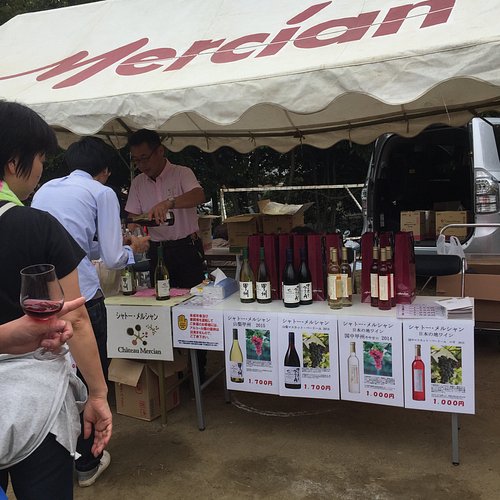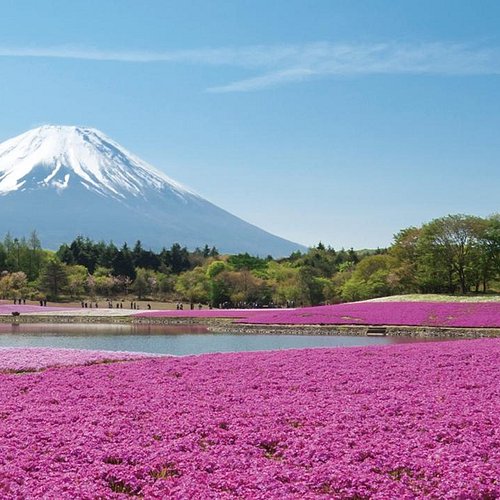10 Cultural Events in Yamanashi Prefecture That You Shouldn't Miss
Yamanashi Prefecture (山梨県, Yamanashi-ken) is a prefecture of Japan located in the Chūbu region of the main island of Honshu.
Restaurants in Yamanashi Prefecture
1. Koshu City Katsunuma Grape Festival
Overall Ratings
4.5 based on 13 reviews
The grape festival is held in Katsunuma, Koshu City, a place renowned for its grapes and wine. The festival takes place in Katsunuma Central Park, where you can enjoy free grapes and wine, and where there is a corner where you can buy a wineglass in order to sample the wine at booths run by wineries in the city. The festival includes stages for drumming and music as well as events such as a procession with a majestic portable shrine. In the evening, the night sky is lit up by the haunting scene of a burning torii gate as well as by beautiful fireworks overhead.
2. Lake Yamanaka Art Illmination Fantasium
Overall Ratings
4.5 based on 8 reviews
"Fantasium" is a term coined from the words "fantasy" and "museum," and this event features an outdoor museum of art illumination that is set up for a limited time on the shore of Lake Yamanaka. Located in Hana-no-miyako Park, the museum exhibits a variety of works, and the glitter of the lighting art against the background of Mt. Fuji lends to the entire site a fantastical feeling. Fireworks are set off on occasions such as Christmas and New Year's, and a Christmas concert is also held here.
3. Fuji Lake Kawaguchi Koyo Festival
Overall Ratings
4.5 based on 45 reviews
The Fuji Lake Kawaguchi Koyo Festival is held in autumn right when the foliage on Lake Kawaguchi turns a beautiful color. A range of stalls plying wares also appear around the venue. The must-see of the event is the "foliage tunnel," where sixty massive trees around the Nashigawa are illuminated at night. From dusk until 10:00 PM, this romantic light-up enchants visitors.
Reviewed By alittlebitofskye - Sydney, Australia
My partner & I spend a couple of hours here in the evening. The trees were beautifully lit, although the corridor hadn’t hit full peak just yet. There was lots of food vendors and market stalls. Lots of parking options if you are driving and temporary bathroom facilities are there to cater for large crowds. The night we visited wasn’t too crowded. Lots of event staff who were able to help even if their English was limited. The event had a great vibe and was thoroughly enjoyable. TIP: if you aren’t driving, please take note of when the last bus to Kawaguchiko is, which was at about 7:30 the night we visited. Otherwise you will need get a taxi back.
4. Lake Kawaguchi Herb Festival
Overall Ratings
4.0 based on 19 reviews
This event is held primarily in Yagizaki Park and Oishi Park on the shore of Lake Kawaguchi. From early June through mid-July, the lavender plants are in full bloom, creating a beautiful scene that looks as though the land is covered with a purple carpet. Particularly photogenic is the contrast between Mt. Fuji, Lake Kawaguchi, and the lavender blossoms as seen from Oishi Park. At Oishi Park, the primary venue for the festival, you can buy herb seedlings and herbal products and also enjoy light meals made using herbs.
5. Fuji Shibazakura Festival
Overall Ratings
4.0 based on 337 reviews
The Fuji Shibazakura Festival, which started in 2008, is held at Motosuko Resort when the shibazakura plants are in bloom. Although there are famous spots for viewing shibazakura blossoms throughout Japan, Motosuko Resort is the only place where you can view shibazakura and Mt. Fuji together. The roughly 800,000 vivid shibazakura plants comprise the largest single expanse of shibazakura in the greater Tokyo area, and their pink, red, white, and purple blossoms, spread out like a carpet, create a beautiful landscape for your enjoyment.
Reviewed By LoVi_1611 - Surabaya, Indonesia
I got lucky because I could see Mt. Fuji also. The view was amazing. This place isn't that big, colder than tokyo and when I was there it was windy. I came on May 9,2019 and the flowers still in a good condition. Better check their website and instagram to make sure the flower condition and the weather because It is quite pricey to get there. My route was Shinjuku Station - Otsuki Station (by JR limited express) --> Otsuki Station - Kawaguchiko Station (by Fujikyu Railway) --> Kawaguchiko Station - Festival area (by bus). I was using Tokyo Wide Pass which cover train from Shinjuku to Kawaguchiko Station round trip. I had to pay for the bus ticket and entrance fee to the venue. Departed from Shinjuku station around 7AM and back again aroun 6 PM. Beside this venue, i also when to photo spot around Kawaguchi Lake (in front of Kukuna Hotel) by Omni bus which I took from Kawaguchiko Station. In my opinion, if you have time, it is better to stay 1 night in Fuji Area so that you can explore others point of interest other than Shibazakura Festival.
6. Yoshida Himatsuri
Overall Ratings
4.0 based on 12 reviews
The Yoshida Fire Festival is one of the Three Bizarre Festivals of Japan. The festival is held every year for two days - August 26th and 27th - as a festival to mark the end of the summer climbing season on Mt. Fuji. The event starts with a Shinto ritual and a portable shrine, then in the evening of August 26th a row of three-meter-high torches that have been set up along the main street in Fuji Yoshida are lit. At the same time, torches are lit one after another at the mountain lodges on Mt. Fuji, and the excitement reaches its peak when all of this turns into a single pathway of light. Nearby are open-air stands, making for a bustling atmosphere. The festival has also been designated an Important Intangible Folk-Culture Asset of Yamanashi Prefecture.
7. Shingenko Festival
Overall Ratings
4.0 based on 17 reviews
This festival is held in Kofu City, a place connected with Takeda Shingen, on around April 12th, the anniversary of Lord Takeda's death. Roughly 1,500 soldiers from throughout the prefecture assemble in Maizuru Castle Park and then, amid the flapping of "furin kazan" war banners, they reenact the valiant march toward the battlefield of Kawanakajima. The festival is jam-packed with events, such as a performance of Suwa drumming (which is said to have bolstered the courage of the Takeda forces), a tea ceremony, and contests involving performance of the song "Takeda Bushi" and of themes connected with "furin kazan," and the festival also features the exhibition and sale of products from Yamanashi Prefecture, a food court, and tours of places linked to Takeda Shingen.
8. Toka Ichi
Overall Ratings
4.0 based on 6 reviews
The Toka Ichi is held every February 10th and 11th in Minami-Alps City, Yamanashi Prefecture. The festival, a harbinger of spring in the Kofu Basin, since long ago has been popular with a great many people. For a distance of 1.1 Kilometers, the Nirasaki-Minami-Alps Central Route prefectural road is lined with shops selling good-luck items such as Dharma dolls and a wide variety of other goods, to the point that it is said, "The only things they don't sell at the Toka Ichi are cats' eggs and horses' horns." During the festival, a stage at the site hosts a variety of shows, such as the singing of popular ballads, miming, and folk entertainment, with the result that both days of the festival are thronged with visitors.
9. Paul Rusch Festival
Overall Ratings
3.5 based on 11 reviews
Paul Rusch was an American who lived in Yatsugatake and Kiyosato after WWII and devoted himself to the reconstruction of Japan and the spread of democracy. This festival, originally created by Rusch himself as a source of motivation for local residents, is now dedicated to his memory. It is held each autumn in Kiyosato, Hokuto, Yamanashi Prefecture. The festival is inspired by the long-standing tradition of Thanksgiving and harvest festivals in America. Various fairs and markets are held, such as a county fair, the Takahara Market, and a craft market. Close to eighty shops and studios exhibit at these fairs. There are also performances by professional musicians, and concerts by a local orchestra and choral group, with the beautiful sounds of music echoing through the clear and open skies of the Yatsugatake Mountains.
10. Shonoki Festival
Overall Ratings
3.0 based on 11 reviews
The festival affectionately referred to as the "Shonoki" has been held since the Edo period in order to pray for a bumper harvest. It is held annually, for four days in May, at the Inazumi Shrine in Otamachi, Kofu City, Yamanashi Prefecture. After Shinto rituals such as an offertory sumo tournament, the performance of festival music, and offertory drum playing have been completed, local organizations and others perform a variety of local performing arts. More than 220 shops, lined up one next to the other, offer opportunities to enjoy inexpensive food, old-fashioned games such as target practice and ring toss, and more, while a specially built stage hosts a variety of events, such as karaoke competitions and ballad shows. There is also an old-fashioned plant market, thronged with visitors seeking to buy seeds and seedlings.









